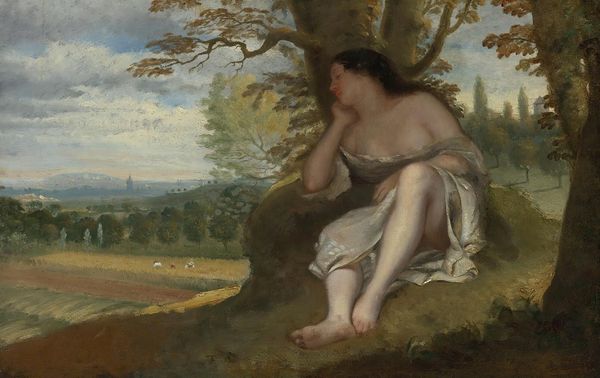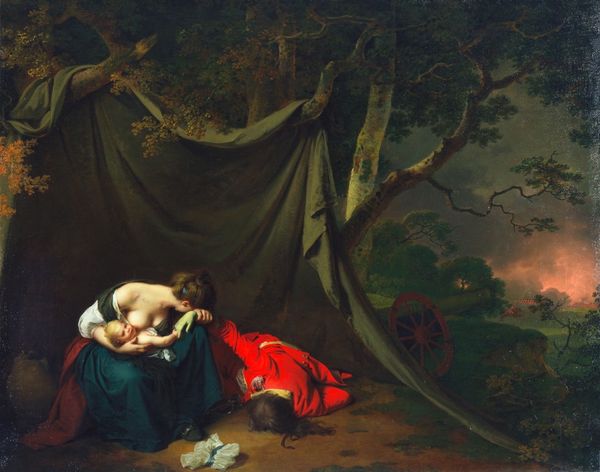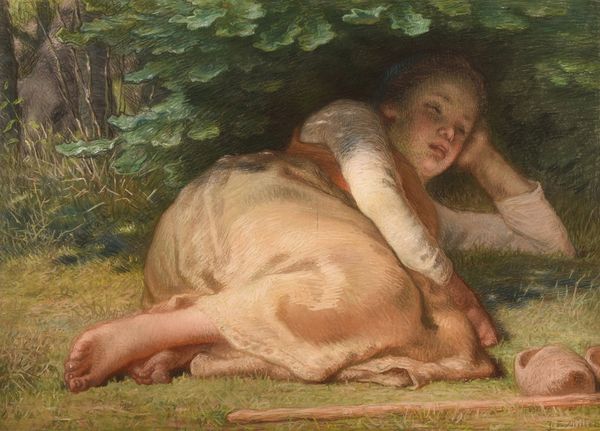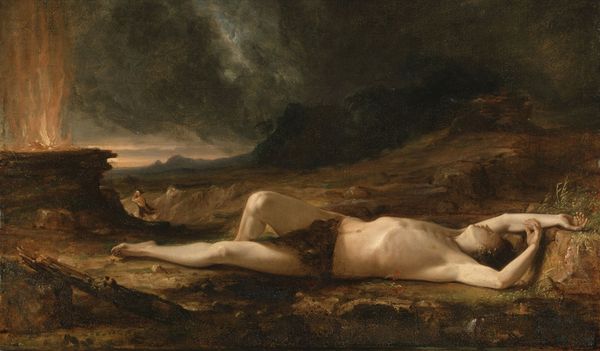
painting, oil-paint
#
portrait
#
figurative
#
painting
#
oil-paint
#
landscape
#
romanticism
#
genre-painting
#
nude
#
portrait art
Copyright: Public Domain: Artvee
Curator: Welcome. Before us is Friedrich von Amerling’s 1834 oil painting, "Schlafende Fischerin," or "Sleeping Fisherwoman." Editor: It’s strikingly tender. The way the light falls across the figures creates an almost dreamlike atmosphere. Is this idealized depiction intended to reinforce societal expectations around labor and motherhood? Curator: Indeed. Let’s first examine the composition. Amerling masterfully uses a pyramidal structure, grounding the scene with the red fabric, guiding our gaze upward to the figures and then out towards the obscured and tumultuous background landscape. Notice the birch tree to the left; its striking, contrasting blacks and whites divide light and shadow as the netting on the right frames a tempestuous view of a darkening sea. The mother’s pale form almost glows against this somber, yet majestic, backdrop. Editor: I'm struck by the juxtaposition. We have this maternal scene of seeming tranquility in the foreground but it’s offset against the foreboding landscape, almost predicting instability and a disruption of social mores. Considering Amerling’s historical context, this could also read as a commentary on the socioeconomic realities of fisherwomen, whose daily lives were hardly idyllic. Their labor and poverty is completely absent in the subject’s softened sensuality, thus placing her within an objectifying male gaze. Curator: Certainly, that’s a reading to be considered, but observe the strategic use of light. It delicately sculpts the contours of the mother and child, drawing attention to their physical forms and establishing a tactile reality in a world that, even then, was experiencing rapid industrial advancement. Here, formal decisions create a palpable tension. Editor: I agree the Romantic technique imbues the image with symbolic significance; a potential to reclaim narratives in art. Despite her repose, her vulnerability perhaps evokes solidarity, reflecting not merely beauty, but human interconnectedness. What if we saw not just idealized motherhood, but women supporting women amidst societal challenges, and how can we connect to that shared experience now? Curator: A valid proposition. Amerling’s composition allows for various readings that speak both to technique and the ongoing negotiation between the aesthetic and lived experience. Editor: Yes. By bringing contemporary discourse to this traditional composition, we may foster deeper understanding and appreciation, bridging past and present concerns around equity and lived experiences.
Comments
No comments
Be the first to comment and join the conversation on the ultimate creative platform.













